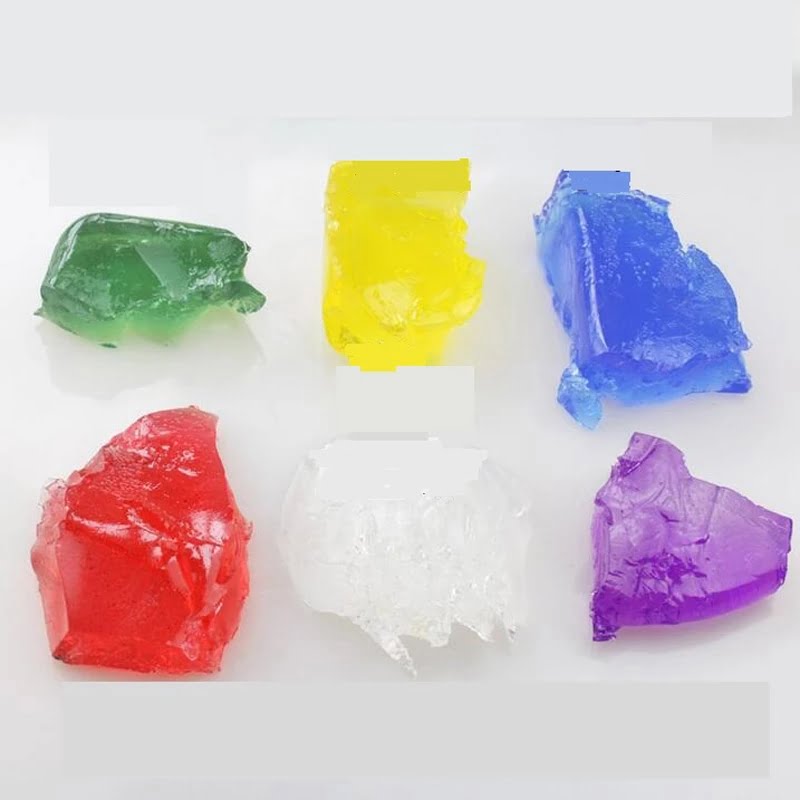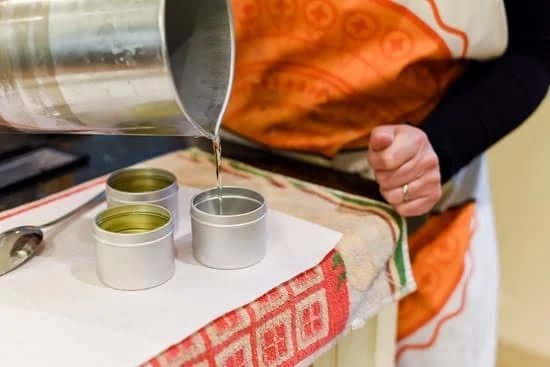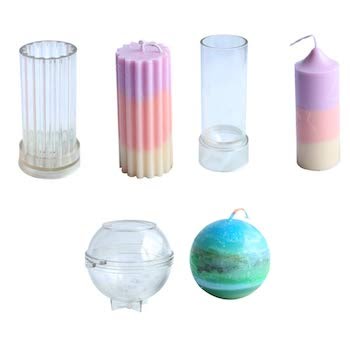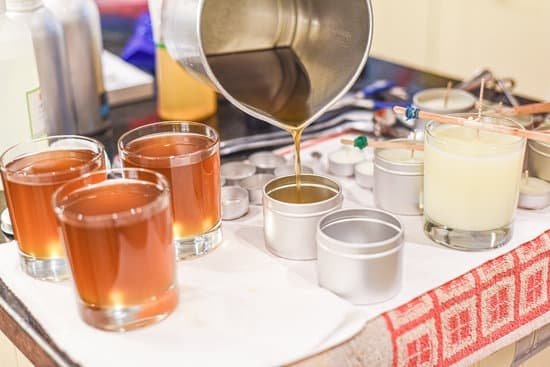Cinnamon oil has long been revered for its warm and inviting aroma, making it a popular choice for candle enthusiasts. This versatile essential oil adds a touch of natural sweetness to any candle, creating a cozy ambiance in any space.
In this article, we will explore the power of cinnamon oil in candle making, from its benefits and uses to safety precautions and expert tips. Whether you are an experienced candle maker or just starting out, incorporating cinnamon oil into your creations can elevate your craft to new heights.
The first step to understanding the power of cinnamon oil in candle making is to gain a brief overview of this aromatic essential oil. Extracted from the bark of the cinnamon tree, cinnamon oil has been used for centuries in various cultures for its medicinal properties and delightful scent.
Its rich and spicy aroma is known to stimulate the senses and create a warm and comforting atmosphere. When used in candles, cinnamon oil can transform an ordinary experience into something truly special.
One of the biggest benefits of using cinnamon oil in candle making is its ability to evoke feelings of relaxation and warmth. The scent of cinnamon has been shown to reduce stress and promote relaxation, making it perfect for creating a cozy environment at home or during meditation practices.
Additionally, research suggests that cinnamon oil may have antimicrobial properties, helping to purify the air and eliminate odors when infused into candles. With so many benefits packed into one small bottle, it’s no wonder why cinnamon oil is a favorite among candle makers worldwide.
In this article, we will delve further into the world of cinnamon oil-infused candles with practical advice on choosing the right oil for your needs and step-by-step instructions on how to incorporate it successfully into your DIY projects. We’ll also explore other creative uses for cinnamon oil beyond candle making, from room sprays to potpourri blends.
However, before diving headfirst into your aromatic adventures, be sure to familiarize yourself with some important safety measures to ensure a safe and enjoyable experience. So, grab your favorite mug of hot cocoa, settle into a cozy nook, and prepare to discover the incredible world of cinnamon oil for candle making.
Understanding Cinnamon Oil
Cinnamon oil is an essential oil derived from the bark or leaves of the cinnamon tree. It has been used for centuries for its aromatic and therapeutic properties. In candle making, cinnamon oil adds a warm and spicy fragrance that can instantly transform any space. This section will provide a brief overview of cinnamon oil, including its origins, extraction process, and various types available.
Origins of Cinnamon Oil
Cinnamon is derived from the inner bark of trees belonging to the Cinnamomum family. There are two main species used to extract cinnamon oil: Cinnamomum verum (Ceylon cinnamon) and Cinnamomum cassia (Chinese cinnamon). Ceylon cinnamon is considered to be “true” cinnamon and is often seen as superior in quality, scent, and flavor compared to Chinese cinnamon.
Extraction Process
The process of extracting cinnamon oil involves steam distillation or cold pressing. Steam distillation is the most commonly used method, where steam is passed through the bark or leaves of the cinnamon tree, separating out the essential oil. Cold pressing involves mechanically pressing the bark or leaves to release the oil.
Types of Cinnamon Oil
There are different types of cinnamon oil available for candle making. Ceylon cinnamon oil has a lighter and sweeter aroma compared to Chinese cinnamon oil, which has a stronger and spicier scent. Additionally, there are variations such as Cinnamon Bark Oil and Cinnamon Leaf Oil. Each type offers a unique fragrance profile and can be chosen based on personal preference or desired outcome in candle making.
Understanding the basics of cinnamon oil will help you make informed decisions when incorporating it into your candle making projects. The next section will explore the benefits of using cinnamon oil in candle making, shedding light on why it has become a popular choice among crafters and enthusiasts alike.
The Benefits of Using Cinnamon Oil in Candle Making
Cinnamon oil is widely used in candle making for its numerous benefits. Here are some key advantages of incorporating cinnamon oil into your homemade candles:
- Aromatherapy Benefits: One of the major advantages of using cinnamon oil in candle making is its aromatherapy benefits. Cinnamon has a warm and comforting scent that can help create a cozy atmosphere in any space. It is known to promote relaxation, reduce stress, and improve focus and concentration. When the cinnamon-scented candle burns, it releases these fragrant essential oils into the air, filling the room with a soothing aroma.
- Natural Insect Repellent: Cinnamon oil is naturally antibacterial and antimicrobial, which makes it an excellent natural insect repellent. Adding cinnamon oil to your DIY candles can help keep pesky insects such as mosquitoes, flies, and ants at bay. This makes cinnamon-scented candles ideal for outdoor gatherings or for use during summer months when bugs are more active.
- Longer Burn Time: Another benefit of using cinnamon oil in candles is that it can extend their burn time. The high concentration of essential oils present in cinnamon oil helps slow down the burning process, resulting in a longer-lasting candle compared to regular wax alone.
To fully enjoy these benefits, it is important to choose the right type of cinnamon oil for your candle making project.
Choosing the Right Cinnamon Oil for Candle Making
When it comes to choosing the right cinnamon oil for candle making, there are a few factors to consider. With so many options available on the market, it can be overwhelming to decide which cinnamon oil will best suit your needs. This section will guide you through the process of selecting the perfect cinnamon oil for your candle making projects.
Types of Cinnamon Oil
Cinnamon oil is derived from either Cinnamomum zeylanicum (Ceylon cinnamon) or Cinnamomum cassia (Chinese cinnamon), each offering distinct aromas and characteristics. Ceylon cinnamon oil has a sweet and delicate scent with a subtle spice, making it an excellent choice for those who prefer a mild fragrance.
On the other hand, Chinese cinnamon oil has a bolder and spicier aroma, making it ideal for individuals seeking a stronger scent. Consider your personal preference and the desired outcome of your candles when deciding between these two types of cinnamon oil.
Pure versus Synthetic
Another important decision to make is whether to use pure or synthetic cinnamon oil in your candle making process. Pure or natural cinnamon oil is extracted directly from the bark of the cinnamon tree and tends to have a richer and more authentic scent. Synthetic oils, on the other hand, are artificially created using different chemicals to mimic the aroma of natural oils.
While synthetic oils may be more cost-effective, they often lack complexity and depth compared to their pure counterparts. If you value using natural ingredients and enjoy an authentic fragrance experience, opt for pure cinnamon oil.
Quality and Purity
Choosing high-quality and pure cinnamon oil is crucial for achieving a superior result in candle making. Look for reputable suppliers who provide detailed information about their sourcing methods, extraction processes, purity levels, and any certifications they may have attained.
It’s also beneficial to read customer reviews and testimonials to ensure that the cinnamon oil you select is well-regarded by other candle makers. Investing in top-quality cinnamon oil will not only enhance the aroma of your candles but also contribute to their longevity and overall quality.
Remember, the choice of cinnamon oil for candle making ultimately depends on your personal preferences and the desired outcome of your candles. Experiment with different types, qualities, and blends of cinnamon oil to create unique scents that reflect your style and intentions. With a wide range of options available, you’re sure to find the perfect cinnamon oil that will elevate your candle making craft to new heights.
Step-by-Step Guide
Using cinnamon oil in candle making can add a warm and inviting aroma to your candles. It creates a cozy atmosphere that is perfect for relaxing or creating a romantic ambiance. If you’re new to incorporating cinnamon oil into your candles, this step-by-step guide will help you get started:
- Prepare Your Materials: Gather all the necessary materials for candle making, including wax, wicks, containers, a double boiler or microwave-safe container, thermometer, and of course, cinnamon oil. Make sure to choose high-quality ingredients for the best results.
- Melt the Wax: Begin by melting your chosen wax in a double boiler or microwave-safe container following the manufacturer’s instructions. Stir occasionally and monitor the temperature using a thermometer until the wax reaches the recommended melting point.
- Add Cinnamon Oil: Once the wax has melted completely and reached the desired temperature (typically around 180-185°F), it’s time to add the cinnamon oil. The general rule of thumb is to use approximately 1 ounce of cinnamon oil for every pound of melted wax, but you may adjust according to your personal preference.
- Stir Thoroughly: Mix the cinnamon oil into the melted wax thoroughly using a stirring utensil. Make sure it is evenly distributed throughout the mixture to achieve an even fragrance in your candles.
- Pour Into Containers: Carefully pour the scented wax into your chosen candle containers while maintaining a steady hand to avoid spillage. Leave a small gap at the top to allow room for any expansion during cooling.
- Insert Wicks: Attach wicks to the bottom of each container using wick stickers or other adhesive methods suitable for candle-making purposes. Ensure that they are centered and upright before moving on to the next step.
- Let it Cool and Set: Allow your candles plenty of time to cool and set undisturbed at room temperature. This process typically takes a few hours but may vary depending on the size of the candles and room temperature.
By following this step-by-step guide, you can create beautifully scented cinnamon oil-infused candles to elevate your DIY candle making experience. Experiment with different ratios of oil to wax to find your desired strength of cinnamon aroma. With practice, you’ll become proficient in incorporating cinnamon oil into your candle making and delighting yourself and others with the inviting scent it brings.
Tips and Tricks for Mastering the Art of Cinnamon Oil-infused Candle Making
Cinnamon oil adds a unique and enchanting fragrance to homemade candles, creating a cozy and inviting atmosphere. To truly master the art of cinnamon oil-infused candle making, there are some tips and tricks that can help you achieve the best results.
1. Quality Matters: When it comes to cinnamon oil, using high-quality oil is essential for obtaining a strong and long-lasting scent in your candles. Look for 100% pure cinnamon essential oil, preferably steam distilled or cold-pressed to ensure the highest quality.
2. Proper Dilution: Cinnamon oil is quite potent, so it’s important to dilute it properly before adding it to your candles. A general guideline is to add around 1 ounce of cinnamon oil per pound of candle wax. However, you can adjust this ratio based on personal preference and the strength of fragrance desired.
3. Testing Fragrance Strength: Before pouring your entire batch of candles with cinnamon oil, it’s wise to test different ratios to determine the ideal fragrance strength for your preferences. Start by making a small sample candle using different amounts of cinnamon oil and assess their scent throw when lit. This will allow you to find the perfect balance between the warming aroma of cinnamon and not overpowering other scents in the room.
| Tips | Tricks |
|---|---|
| Use high-quality cinnamon oil | Dilute properly for optimal fragrance |
| Test different ratios for ideal scent strength | Avoid overheating during melting process |
| Add cinnamon oil at lower temperatures | Use a thermometer for precise temperature control |
These tips and tricks will help you to perfect your cinnamon oil-infused candle making skills. Remember to exercise caution, as working with essential oils requires a careful approach. The next section will further explore the versatility of cinnamon oil beyond candle making, allowing you to explore new creative possibilities.
Exploring the Versatility of Cinnamon Oil
Cinnamon oil is a versatile essential oil that offers more than just its delightful aroma in candle making. While it is widely used for its spicy and warm scent in candles, it also has a range of other applications and benefits. In this section, we will explore the versatility of cinnamon oil beyond candle making.
One popular use for cinnamon oil is in aromatherapy. The invigorating scent of cinnamon can help uplift your mood and create a sense of warmth and comfort in any space. It can be used in diffusers or added to massage oils for a relaxing and comforting experience. The spicy aroma can also help promote feelings of relaxation and reduce stress, making it an excellent choice for creating a calming atmosphere.
In addition to its aromatic properties, cinnamon oil is also known for its potential health benefits. It has natural anti-inflammatory, antimicrobial, and antioxidant properties that may help boost your immune system and support overall well-being. Some studies have even suggested that cinnamon oil may have potential therapeutic effects on various health conditions such as infections, digestive issues, and diabetes management.
Furthermore, cinnamon oil can be used in homemade cleaning products to give them a natural fragrance while harnessing its antimicrobial properties. Adding a few drops of cinnamon oil to your cleaning solutions can help eliminate bacteria and freshen up your home without the use of harsh chemicals.
Precautions and Safety Measures when Using Cinnamon Oil in Candle Making
Cinnamon oil is a popular choice for candle making due to its warm and inviting aroma. However, it is important to take precautions and follow safety measures when working with this essential oil. This section will provide you with the necessary information to ensure a safe and enjoyable candle making experience using cinnamon oil.
First and foremost, it is crucial to handle cinnamon oil with care as it can be a skin irritant in its undiluted form. Always wear gloves when working with concentrated cinnamon oil to protect your skin. If you accidentally get the oil on your skin, wash the affected area immediately with soap and water.
In addition to skin irritation, pure cinnamon oil is highly flammable. It is important to keep it away from open flames or heat sources during your candle making process. Always work in a well-ventilated area to minimize the risk of fire hazards.
When adding cinnamon oil to your wax or other ingredients, ensure that you are using the recommended dilution ratio. Undiluted cinnamon oil can cause your candles to burn too hot or create excessive soot. Most experts recommend using no more than 10% cinnamon oil in your candle recipe.
To further enhance safety, always use high-quality ingredients that are specifically designed for candle making. This includes purchasing reputable brands of cinnamon oil from trusted suppliers who provide detailed safety information on their products.
By following these precautions and safety measures, you can enjoy the benefits of using cinnamon oil in candle making while ensuring a safe environment for yourself and others.
| Precautions | Safety Measures |
|---|---|
| Handle with care as it can cause skin irritation | Wear gloves when working with concentrated cinnamon oil and wash affected areas immediately if contact occurs |
| Avoid open flames or heat sources | Keep cinnamon oil away from any potential fire hazards |
| Follow recommended dilution ratios | Use no more than 10% cinnamon oil in your candle recipe to prevent excessive heat and soot |
| Purchase high-quality ingredients from reputable suppliers | Ensure the cinnamon oil you use is specifically designed for candle making and comes with detailed safety information |
Frequently Asked Questions about Cinnamon Oil and Candle Making
In this section, we will address some commonly asked questions about using cinnamon oil in candle making.
- Can I use any type of cinnamon oil for candle making?
- How much cinnamon oil should I add to my candle?
- Can I mix cinnamon oil with other fragrances?
- How long does the fragrance from cinnamon oil last in candles?
- Are there any safety precautions when using cinnamon oil in candles?
When choosing a cinnamon oil for candle making, it’s important to select one that is specifically labeled as suitable for use in candles. This ensures that the oil has been tested and formulated to be safely used with wax and a flame. Avoid using essential oils or fragrance oils that are not intended for candle making, as they may not perform well or could be potentially hazardous.
The amount of cinnamon oil you add to your candle will depend on the desired strength of the scent and the size of your container. As a general rule of thumb, it is recommended to use approximately 1 ounce of cinnamon oil per pound of wax.
However, you can adjust this ratio according to your preference. Keep in mind that adding too much cinnamon oil can result in an overpowering scent or even affect the performance and burn time of your candle.
Yes, you can definitely experiment with blending different scents together to create unique combinations. Cinnamon oil pairs well with warm and spicy fragrances such as vanilla, clove, or nutmeg. However, it’s important to test small batches before committing to a large batch of candles. Some scents may not blend harmoniously or could overpower the cinnamon aroma.
The longevity of the fragrance will vary depending on factors such as the quality of the cinnamon oil used and how well it binds with the wax during the pouring process. On average, the scent from a properly made cinnamon-infused candle can last anywhere from several weeks to a couple months when stored properly in a cool, dark place.
Yes, it is crucial to follow safety guidelines when working with cinnamon oil in candle making. Cinnamon oil is highly concentrated and can cause skin irritation or allergic reactions if not handled properly. Always wear gloves and protective eyewear when measuring and pouring the oil. Additionally, be cautious of the flashpoint of your chosen wax, as adding too much cinnamon oil may lower the flashpoint and increase the risk of fire hazards.
By addressing these frequently asked questions, you can feel more confident and informed when using cinnamon oil in your candle making endeavors. Remember to always prioritize safety and experimentation to create beautifully scented candles that enhance your space.
Conclusion
In conclusion, incorporating cinnamon oil into your candle making craft can truly elevate and enhance the overall experience and results. Not only does cinnamon oil add a warm and inviting scent to your candles, but it also offers a range of benefits for both the maker and the user of the candles. From its natural antibacterial properties to its ability to improve focus and boost mood, cinnamon oil is a valuable addition to any candle making process.
When using cinnamon oil in your candle making, it is important to choose the right type of oil that suits your needs and preferences. Whether you opt for Ceylon cinnamon oil for a sweeter aroma or Cassia cinnamon oil for a stronger and more spicy scent, make sure to research and purchase oils from reputable sources.
Furthermore, following a step-by-step guide can help you successfully incorporate cinnamon oil into your DIY candle making process. From measuring the correct amount of oil to properly blending it with the wax, attention to detail will ensure that you achieve the desired fragrance intensity in your candles.
Lastly, while cinnamon oil is commonly used in candle making, its versatility extends beyond this craft. You can explore other creative uses for cinnamon oil such as in homemade soaps or room sprays, allowing you to enjoy its aromatic benefits in various ways.
In conclusion, by experimenting with different techniques, researching varieties of oils, and ensuring safety precautions are followed when working with cinnamon oil, you can truly elevate your candle making craft. Harness the power of this incredible ingredient and bring warmth and comfort into any space with candles infused with the delightful scents of cinnamon.

Welcome to my candle making blog! In this blog, I will be sharing my tips and tricks for making candles. I will also be sharing some of my favorite recipes.





